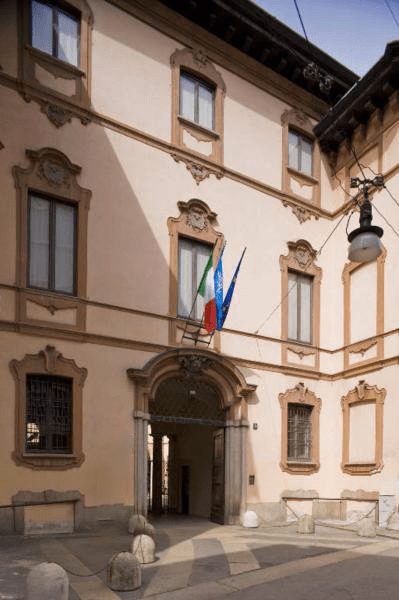Palazzo Clerici: a Pearl of Milan between History and Beauty
Palazzo Clerici in Milan is one of the city's architectural gems, with a history intertwined with that of Milanese nobility and the city itself.
Èlit - Palazzo Clerici: a Pearl of Milan between History and Beauty
Located in the historic center, a stone's throw from the Duomo and other historic monuments, Palazzo Clerici represents an extraordinary example of Baroque and Rococo architecture, with a charm that has captivated generations of visitors.
The history of Palazzo Clerici began in the seventeenth century when the Clerici family acquired an ancient noble residence located in one of Milan's most prestigious areas. The Clerici were a noble family originally from Bergamo, who held important political and military positions in Spanish Milan. With the purchase of this palace, the Clerici family intended to consolidate their prestige and influence in Milan at the time.
The palace underwent a series of transformations and expansions over the centuries, with the addition of new wings and the renovation of the interiors to make them more sumptuous and rich in decorations. The palace interiors are characterized by frescoes, stuccoes, antique furniture, and works of art of inestimable value, testifying to the refined taste and elegance of the owners.
Among the most famous works of art housed inside the palace is the painting "The Death of Cleopatra" by Guido Cagnacci.
One of the most interesting features of Palazzo Clerici is its Italian garden, an oasis of peace and tranquility in the heart of the city. The garden was designed according to the canons of the Italian Renaissance, with fountains, statues, flower beds, and pergolas creating a suggestive and romantic atmosphere. The garden is open to the public only on special occasions, and represents an ideal place to spend time outdoors in an exclusive and reserved setting.
Over the centuries, Palazzo Clerici has been the scene of important historical and cultural events, and has hosted illustrious figures from Milanese and Italian history. One of the most famous visitors to the palace is undoubtedly Napoleon Bonaparte, who stayed at the palace during his stay in Milan in the nineteenth century. Important artists and writers also frequented the palace, contributing to making it one of the most prestigious places in the city.
Today Palazzo Clerici is owned by the Cariplo Foundation, which has initiated a program of restoration and enhancement of the palace in order to preserve its historical and artistic value for future generations. The palace is open to the public for exhibitions and cultural events, and offers the opportunity to visit the interiors and the palace garden to immerse oneself in the history and art of Milan.
In conclusion, Palazzo Clerici is an extraordinary place that deserves to be visited and admired for its beauty and its millenary history. With its works of art, its gardens, and its unique atmosphere, the palace is a veritable treasure trove that tells the story of Milan and its nobility with elegance and sophistication.
But it is the inner courtyard that has captured the imagination of local Milanese people as well as tourists for centuries. With its elegant porticoes and imposing columns, the courtyard of Palazzo Clerici seems to have remained unchanged over the centuries.
The courtyard of Palazzo Clerici has a long history of mysteries and legends. According to some sources, the courtyard was a place of secret meetings for Milanese nobility, where banquets and clandestine parties were held.
One legend tells that behind one of the courtyard walls there is a hidden room, accessible only through a secret door. Inside this room would be a treasure hidden for centuries, left there by an ancient owner of the palace.
But one thing is certain: the courtyard of Palazzo Clerici is much more than it seems. It is a place steeped in history and mystery, which continues to capture the imagination of those who visit it.

